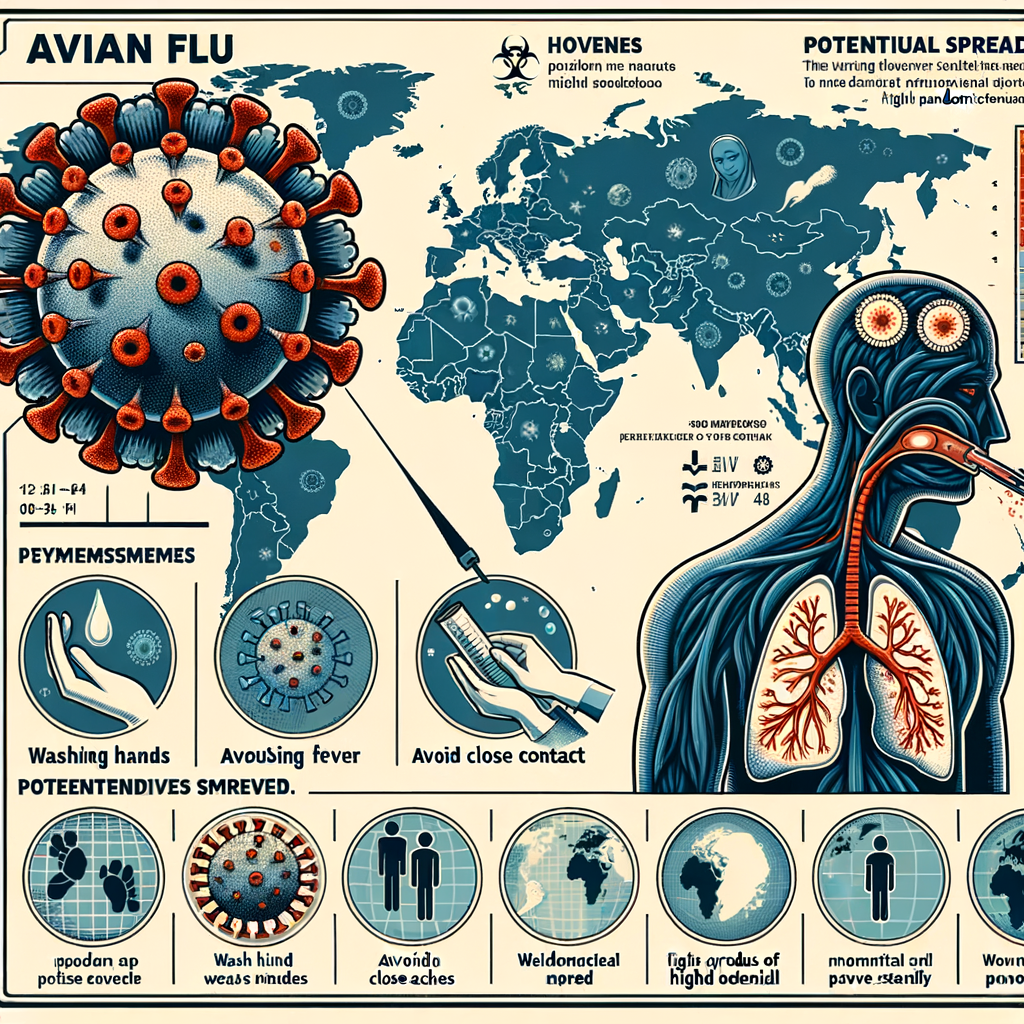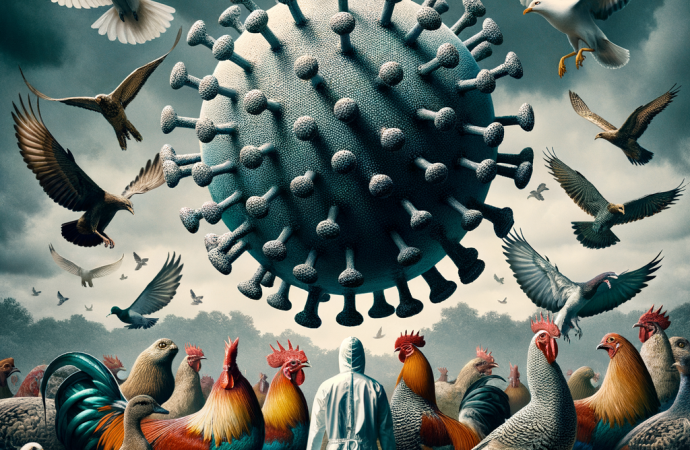Introduction Avian influenza, commonly known as bird flu, is a highly contagious viral infection that primarily affects birds. However, recent outbreaks have sparked concerns about the potential for the virus to jump species and infect humans. This article delves into the complexities of avian flu, exploring the risks and implications of interspecies transmission, and outlining
Introduction
Avian influenza, commonly known as bird flu, is a highly contagious viral infection that primarily affects birds. However, recent outbreaks have sparked concerns about the potential for the virus to jump species and infect humans. This article delves into the complexities of avian flu, exploring the risks and implications of interspecies transmission, and outlining precautionary measures to mitigate the threat.
Understanding Avian Influenza
Avian influenza viruses (AIVs) belong to the Orthomyxoviridae family and are classified into different subtypes based on two surface proteins: hemagglutinin (HA) and neuraminidase (NA). The HA protein binds to receptors on the host cell, facilitating viral entry, while the NA protein aids in the release of newly formed virus particles.
AIVs are further categorized into two groups: low pathogenic and highly pathogenic. Low pathogenic AIVs (LPAIVs) typically cause mild or asymptomatic infections in birds, while highly pathogenic AIVs (HPAIVs) can lead to severe respiratory disease, systemic infection, and high mortality rates.
Interspecies Transmission of Avian Flu
Transmission of avian flu viruses to humans is a rare occurrence, but it has been documented in several cases. Most infections have resulted from direct contact with infected poultry or their bodily fluids. Infected birds shed the virus through their feces, respiratory secretions, and saliva, which can contaminate the environment and pose a risk to humans who handle or interact with these animals.
Risk Factors for Interspecies Transmission
The likelihood of avian flu jumping to humans depends on several factors, including:
- Exposure to infected birds: Individuals who work with poultry or live in close proximity to domestic or wild birds have a higher risk of exposure to the virus.
- Species of bird: Some bird species are more likely to carry and shed AIVs than others. For example, chickens and ducks are known to be particularly susceptible to HPAIV infections.
- Viral strain: Not all AIV strains are capable of infecting humans. HPAIVs, particularly those belonging to the H5 and H7 subtypes, have been responsible for most human cases of avian flu.
- Host factors: The immune status and underlying health conditions of an individual can influence their susceptibility to avian flu infection.
Symptoms and Complications of Avian Flu in Humans
In humans, avian flu infection can manifest with a range of symptoms, depending on the severity of the virus. Mild cases may resemble seasonal influenza, causing fever, cough, sore throat, muscle aches, and headache. More severe infections can lead to pneumonia, respiratory failure, and multi-organ dysfunction.
Complications of avian flu in humans can be life-threatening and include:
- Respiratory distress syndrome
- Sepsis
- Encephalitis
- Heart failure
- Kidney failure
Treatment and Prevention of Avian Flu
There are no specific antiviral medications developed specifically for avian flu infection in humans. However, antiviral drugs used to treat human influenza, such as oseltamivir and zanamivir, have shown some efficacy in treating avian flu cases.
Prevention of avian flu transmission to humans is paramount and involves implementing a comprehensive surveillance system, vaccinating poultry, and educating individuals about the risks associated with handling infected birds.
Surveillance and Monitoring
Early detection and reporting of avian flu outbreaks in poultry populations are crucial to prevent the spread of the virus and reduce the risk of interspecies transmission. Regular surveillance and monitoring programs involving the collection and testing of samples from poultry farms and wild bird populations help identify infected animals and implement quarantine measures.

Picture by: Dalle-3
Vaccination of Poultry
Vaccination of poultry against avian flu viruses plays a vital role in controlling the spread of the virus within poultry populations and reducing the likelihood of transmission to humans. Several vaccines are available and are recommended for use in areas where avian flu is endemic or has been detected.
Risk Management and Education
Individuals who interact with poultry or live in close proximity to bird populations should be educated about the risks associated with avian flu and advised to take appropriate precautions, such as:
- Avoiding contact with sick or dead birds
- Wearing protective gear when handling poultry or cleaning poultry facilities
- Washing hands thoroughly after handling poultry or touching bird droppings
- Cooking poultry products thoroughly to an internal temperature of 165°F (74°C)
- Reporting any suspected cases of avian flu in poultry or wild birds
Global Health Threat
Avian flu poses a significant global health threat due to its potential for interspecies transmission and pandemic spread. The H5N1 strain of HPAIV has been responsible for several human outbreaks in recent years, including highly lethal cases in Southeast Asia.
The rapid mutation rate of AIVs and the potential for genetic recombination between different strains raise concerns about the emergence of new variants that may be more transmissible and virulent in humans.
Conclusion
Avian flu is a complex and evolving threat that requires a multi-disciplinary approach to mitigate the risks of interspecies transmission. By implementing surveillance and early detection systems, vaccinating poultry, educating individuals about risk factors, and promoting responsible handling practices, we can reduce the likelihood of avian flu jumping to humans and potentially causing a global pandemic.
Continued research and international collaboration are essential to enhance our understanding of avian flu, develop new vaccines and therapeutics, and strengthen our preparedness for future outbreaks.






















